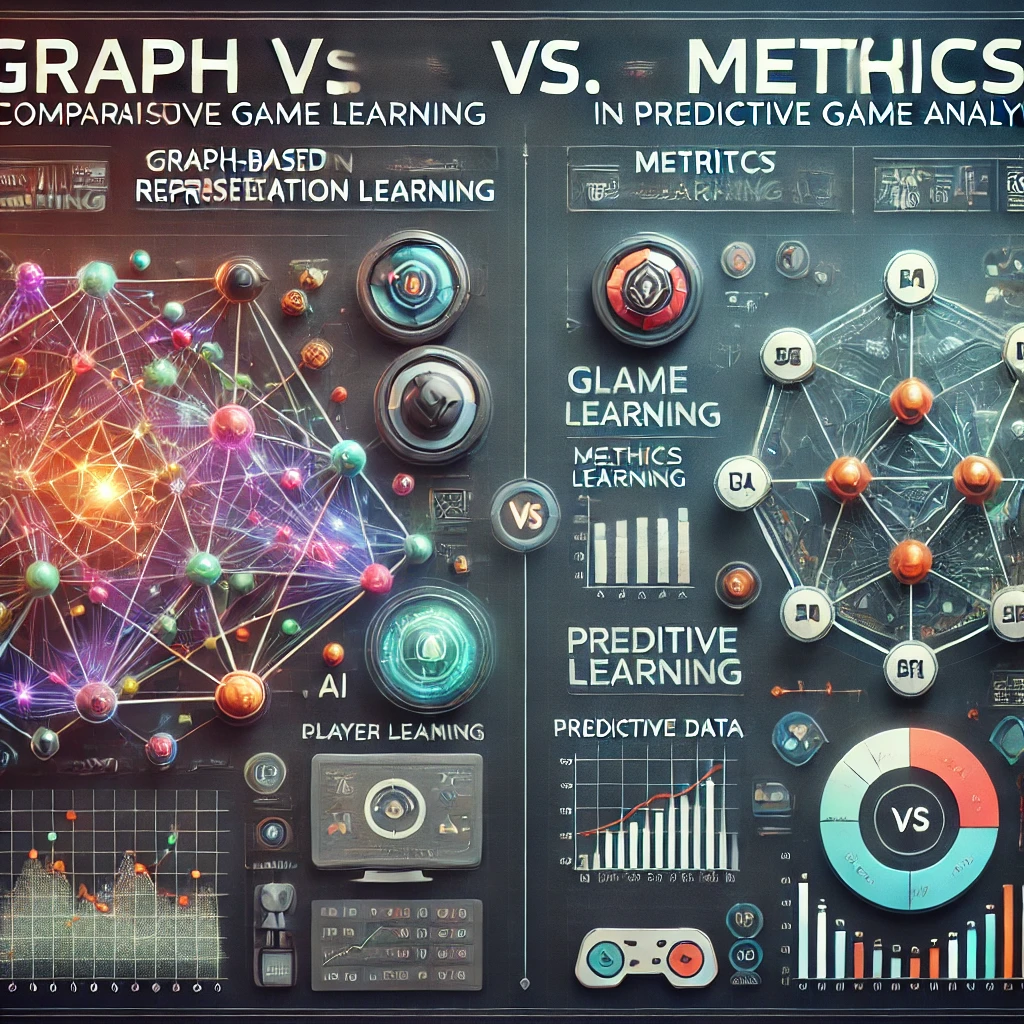"Graph vs. Metrics: A Comparison of Predictive Game Analytics"
This study compares graph-based representation learning using game provenance graphs with traditional metrics-based machine learning for predictive game analytics. It evaluates their effectiveness in forecasting player behavior, performance, and outcomes. The research highlights the strengths and limitations of both approaches, offering insights into their applicability in game data analysis.
Key Objectives of the Study
- Compare Predictive Accuracy – Assess how well each approach predicts player behavior, game performance, and outcomes.
- Evaluate Interpretability – Examine how easily insights can be extracted from the models.
- Analyze Computational Efficiency – Measure the computational costs and feasibility of each method in real-world applications.
Methodology
- Graph-Based Representation Learning: Uses game provenance graphs, where nodes represent events, actions, or players, and edges capture their relationships. Graph neural networks (GNNs) or other deep learning techniques are employed to extract meaningful representations.
- Metrics-Based Machine Learning: Utilizes traditional feature engineering, where predefined numerical metrics are extracted from gameplay data and fed into machine learning models such as decision trees, random forests, or neural networks.
Findings & Insights
- Graph-Based Learning Strengths:
- Captures intricate dependencies and sequences of in-game events.
- Better at modeling complex player interactions and long-term strategic behaviors.
- Often outperforms metrics-based methods in dynamic, multi-agent environments.
- Metrics-Based Learning Strengths:
- Easier to interpret and explain to game designers.
- Requires less computational power compared to graph-based models.
- Performs well when high-quality handcrafted features are available.
Conclusion
The study highlights that graph-based methods provide a deeper structural understanding of gameplay dynamics, while metrics-based approaches remain a strong baseline for efficiency and interpretability. The choice between the two depends on the specific predictive task, available data, and computational resources. Future work may explore hybrid approaches that combine both methodologies for improved game analytics.
International Research Awards on Network Science and Graph Analytics
Visit Our Website : https://networkscience.researchw.com/
Contact us : network@researchw.com
Get Connected Here:
*****************
Tumblr: https://www.tumblr.com/emileyvaruni
Pinterest: https://in.pinterest.com/emileyvaruni/
Blogger: https://emileyvaruni.blogspot.com/
Twitter: https://x.com/emileyvaruni
YouTube: https://www.youtube.com/@emileyvaruni
- Get link
- X
- Other Apps
- Get link
- X
- Other Apps


Comments
Post a Comment